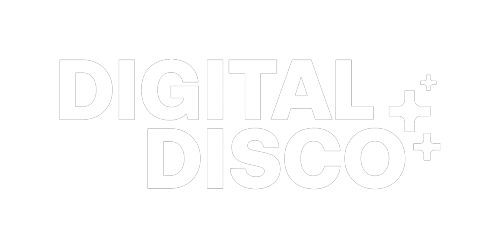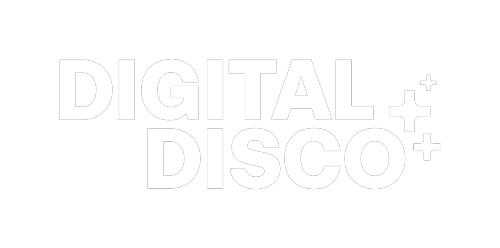10 Essential Elements to Telling Your Brand Story
Do you remember your favourite book or movie as a child? My favourite books were Roald Dahl - his characters and stories had so much personality, and as a child, they just spoke to me. I could see it all in my imagination, I could hear the characters speaking, and I could feel everything they were going through.
And that is the power of storytelling.
Stories are a powerful tool in human communication - to read, hear or see a story is to feel an experience. Stories capture attention, pique interest, entice people. Stories produce trust and cultivate genuine connections.
And that is why your brand’s story is such an essential part of your business and your relationship with your customers. In this day and age, people are tired of being talked at and sold to by businesses - they crave genuine connection with brands, and your brand story helps them get this. But it isn’t enough to have a strong story behind your brand - the real challenge is in how you tell your story. How you make it resonate with your audience.
What is Your Brand Story?
A brand story isn’t a linear narrative, and it isn’t a 5-page essay on your websites’ About page. In fact, it doesn’t even have to be confined to the written word. Your brand story is a combination of your brand’s existence - it is your essence, who you are - how you came to exist, your vision, your mission, your values, and your culture. It is what you do, who you do it for, and how you do it. It is also where you’re headed.
As you can see, it isn’t just one single thing, but rather it is formed by a customers’ sum total of interactions with your brand. It is everything they see, read, hear, touch, and experience about your brand - your website’s UX, your Google reviews, your customer service on Facebook, the speed of your email replies, and the quality of your packaging.
Your brand story tells your customers who you are, why you want to help them, and why they would enjoy working with you or buying from you. It helps you make an authentic, genuine connection with your customers at every stage of the buyer journey.
But, here’s the catch… you actually don’t have full control over your brand story. Sorry to burst that bubble. But your brand story is part of what you communicate with your customers and part of how they perceive that communication. You can only control what message you put out there - you can’t control how people perceive it. And that is why it is so important to carefully craft the message, the brand story, that you want to put out to the world, and to your customers.
To help you craft a brand story that has impact and resonates, here are ten essential elements you need to shape your narrative.
#1. KISS - Keep it Simple, Stupid
Simple stories are better, so try not to make your brand story too convoluted. All good stories have a beginning, a middle, and an end, so use this pattern to craft yours.
The beginning - the problem: explain the problem you set out to solve for your customers
The middle - the solution: describe how you solve it for them
The end - the success: get excited about the success you produce - but be careful to make it not seem like this success is the end of the road, you want to suggest that it is just the beginning, a continuation, not an end
Simple stories leave no room for fluff, half-truths, and inconsistencies - they are straightforward, direct, and trustworthy, so keep this central to your brand story when you craft it.
#2. Be Human
People like to see the face behind the brand, and with the advent of social media, this has never been easier for businesses to do. You have incredible opportunities - through stories, live videos, and so on - to tell your brand story, one person, at a time. Just make sure you are relatable and personable, avoiding jargon and marketing-speak, and instead connect on a human level by talking to your audience, not at them.
#3. Connect with Your Customer
Your story really isn’t about your business - it is just the construct for the story. Ultimately, the goal of your story is to make a connection with your customer. You want them to relate to your story, you want them to feel it on an emotional level. Use your narrative to make them laugh, make them cry, make them feel that you are going to solve their problems - make them feel something that connects them with your brand. Make them feel something that moves them to act.
#4. Create Experiences
Your brand story doesn’t need to be an elevator pitch - once you have connected with your audience, they generally keep coming back to you, because they feel tied to your brand. So, don’t feel like you have to tell everything in one big breath - instead, invite your audience in to experience your brand over time. Build and nurture a relationship with them through crafted experiences that build up your brand story.
#5. Understand Your Brand and Your Audience
Your brand story should represent who you are, and speak to your target audience. But if you don’t fully understand your brand (your mission, values, culture, etc.) or your audience (their needs, pain points, struggles, etc.) then how can you ever know the right subject, format, or medium for your brand story.
That is why it is important to take the time to really map out your brand, as well as develop customer avatars. Then you can use these as a guide when developing content that will communicate your brand story.
#6. Don’t Overthink It
There is no perfect story, there is only your story. Remember, you need to feel your story too - you also need to resonate with it. And if you spend too much time overthinking it, you risk losing your own connection with it and making it feel manufactured. Just keep it human and keep it real.
#7. Bring Others into Your Story
People identify with other people, so make sure you bring others into your narrative. Whether that is your employees, your family, or your customers, make sure to highlight the people who drive your brand.
And where possible, let other people help you tell your story. Encourage your audience to share your story by making it easy to do so, with working social buttons, SEO optimisation, hashtags, and so on. Your customers experience your narrative (problem, solution, success) first hand, so having them share their experience of your brand story is a very powerful message.
#8. Be Creative
Your brand story doesn’t have to be relegated to your About page, or to a blog post. You don’t need to stick to text and pictures - this is your opportunity to have a little fun and get a bit creative! Experiment with different media to tell your brand story, try different social networks, use audio, video, and infographics. Use your customer avatars to figure out what your audience is doing online, and figure out innovative ways to reach them!
#9. Bring the Offline Online
People love getting an inside look at your products, processes, or team. It humanises a brand and adds a layer of authenticity. So, show users how you do what you do - invite them to follow along in your day-to-day through live stories, post-behind-the-scenes photos on Instagram, or do live Q&As on Facebook. Transparency can go a long way with communicating your brand story.
#10. Tell Your Whole Story
It’s more important to be authentic and human these days than it is to appear flawless. With the prevalence of the picture-perfect Insta life, people really resonate with brands that show their imperfect side. It helps to build trust, and it leaves a lasting impression, so don’t be afraid to share it all - the good, the bad, and the ugly. Share how you turned negative experiences into a chance to do good; how you learned something from your falls; or how your trials became your inspiration. It’s a powerful message!
Do you need help crafting your brand story? Or maybe you need assistance with your content strategy and finding the best way to tell your story? Get in touch with the Digital Disco team - we’re here to help with all of your social and content creation needs.




